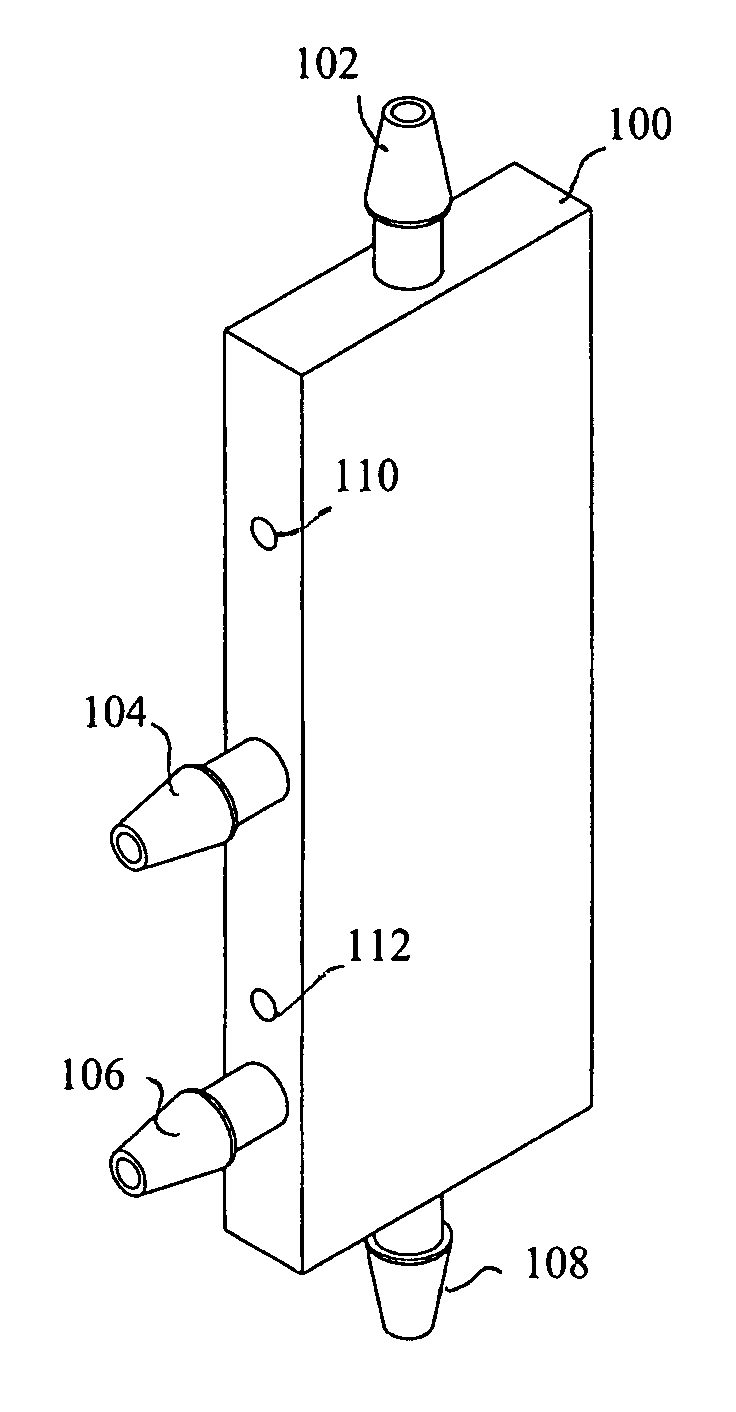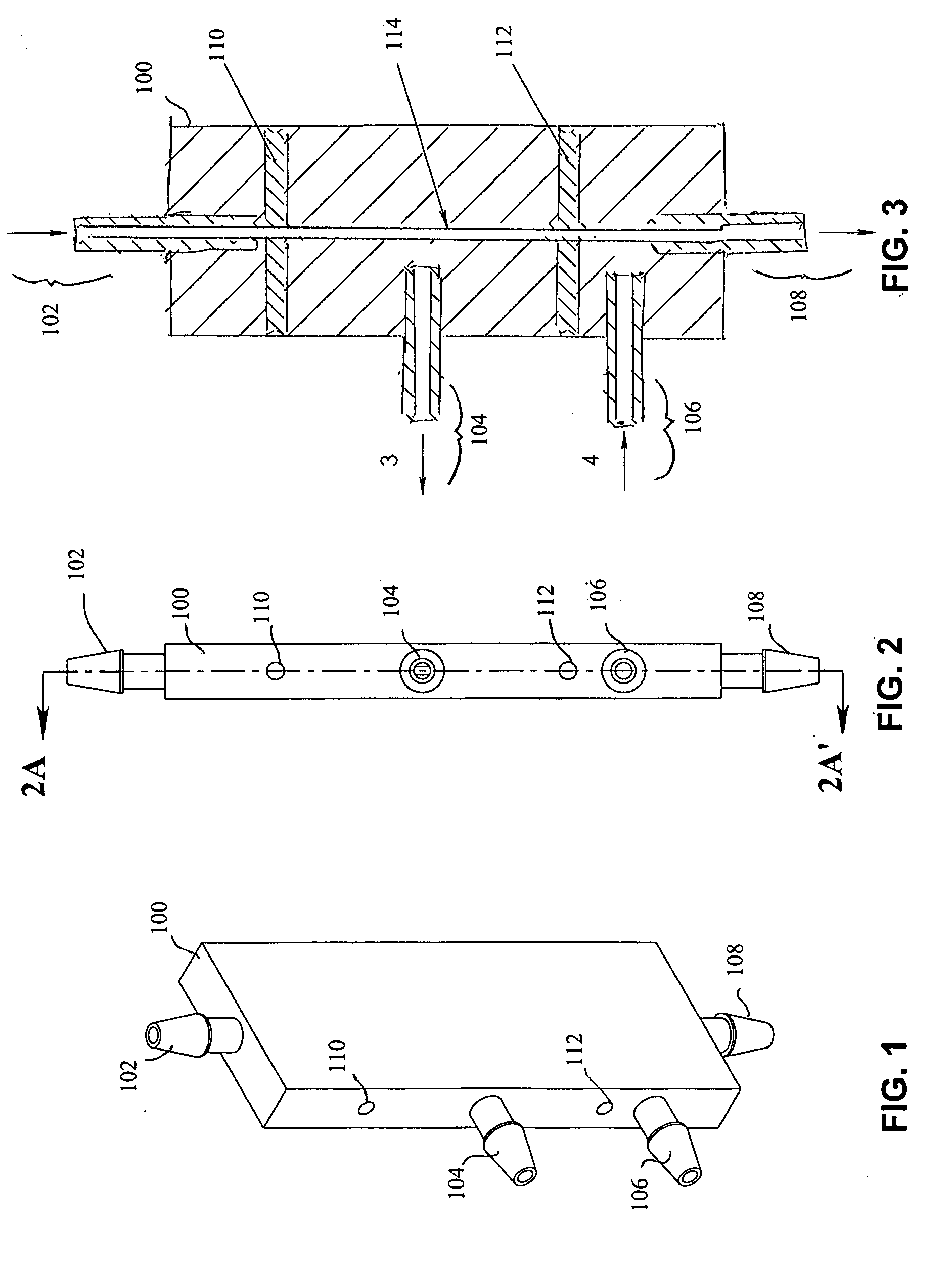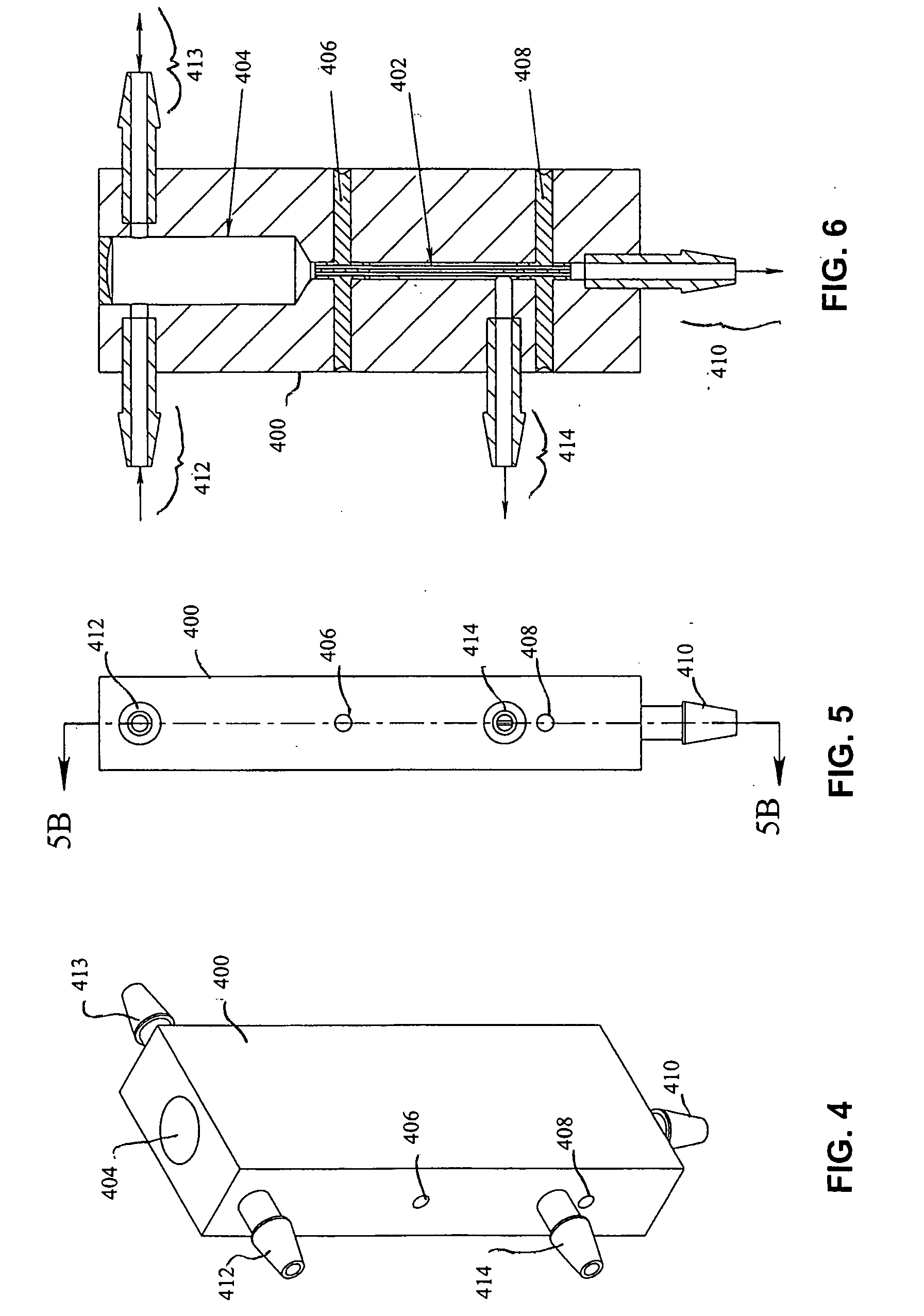Liquid To Liquid Biological Particle Concentrator
- Summary
- Abstract
- Description
- Claims
- Application Information
AI Technical Summary
Benefits of technology
Problems solved by technology
Method used
Image
Examples
working examples
[0250]Performance testing of the device as shown in FIG. 1 above was conducted using carboxylate-coated yellow-green fluorescent polystyrene microspheres (Polysciences, Inc., Warrington, Pa.). Three sizes of microspheres were used; 1 micron, 3 micron, and 4.5 micron diameter. For each test run, 10 mL of a diluted microsphere suspension in water was used as feed. The results of nine 1-micron tests, eight 3-micron tests, and nine 4.5-micron tests were averaged, and the results are summarized graphically in FIG. 5. Note that these tests were performed without surfactant or shear added to the process, and the efficiency ranged from approximately 40% to 65%. Testing of the device was then performed with the addition of 0.01% Triton X-100 surfactant, improving the efficiency of the device to nearly 100%. Efficiency improvement data are shown in Table 1 below.
TABLE 1Efficiency Improvement using SurfactantCondition number 16: 3 um carboxylate-coated YG microspheresCell efficiency improvemen...
PUM
| Property | Measurement | Unit |
|---|---|---|
| Pore size | aaaaa | aaaaa |
| Pressure | aaaaa | aaaaa |
| Concentration | aaaaa | aaaaa |
Abstract
Description
Claims
Application Information
 Login to View More
Login to View More - R&D
- Intellectual Property
- Life Sciences
- Materials
- Tech Scout
- Unparalleled Data Quality
- Higher Quality Content
- 60% Fewer Hallucinations
Browse by: Latest US Patents, China's latest patents, Technical Efficacy Thesaurus, Application Domain, Technology Topic, Popular Technical Reports.
© 2025 PatSnap. All rights reserved.Legal|Privacy policy|Modern Slavery Act Transparency Statement|Sitemap|About US| Contact US: help@patsnap.com



